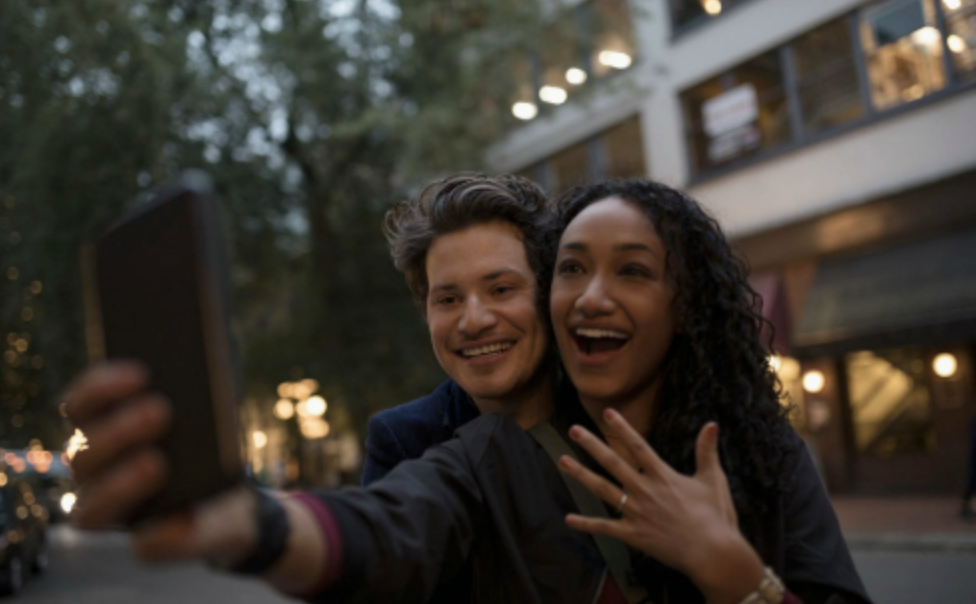Trick-or-treating is a traditional Halloween custom for children and adults in some countries. In the evening before All Saints’ Day (1 November), children in costumes travel from house to house, asking for treats with the phrase “Trick or treat”. The “treat” is usually some form of candy, although in some cultures money is given instead. The “trick” refers to a threat, usually idle, to perform mischief on the homeowner(s) or their property if no treat is given. Trick-or-treating usually occurs on the evening of October 31. Some homeowners signal that they are willing to hand out treats by putting up Halloween decorations outside their doors; others simply leave treats available on their porches for the children to take freely. Houses may also leave their porch light on as a universal indicator that they have candy.
In Scotland and other parts of Britain and Ireland, the tradition of guising, going house to house at Halloween and putting on a small performance to be rewarded with food or treats, goes back at least as far as the 16th century, as does the tradition of people wearing costumes at Halloween. There are many accounts from 19th-century Scotland and Ireland of people going house to house in costume at Halloween, reciting verses in exchange for food, and sometimes warning of misfortune if they were not welcomed.[1][2] While going house to house in costume has long been popular among the Scots and Irish, it is only in the 2000s that saying “Trick or treat” has become common in Scotland and Ireland.[3] Prior to this, children in Ireland would commonly say “Help the Halloween Party” at the doors of homeowners.[3]
In North America, trick-or-treating has been a Halloween tradition since the 1920s. The earliest known occurrence there of the Irish and Scottish Halloween custom of “guising” – children going from house to house for food or money while disguised in costume[2] – is from 1911, when children were recorded as having done this in Ontario, Canada.[4]
The activity is prevalent in the United Kingdom, Ireland, the United States, Canada, and Australia. In northwestern and central Mexico, this practice is called calaverita (Spanish diminutive for calavera, “skull” in English), and instead of “Trick or treat”, the children ask, “¿Me da mi calaverita?” (“Can you give me my little skull?”), where a calaverita is a small skull made of sugar or chocolate.
History[edit]
Ancient precursors[edit]
Traditions similar to the modern custom of trick-or-treating extend all the way back to classical antiquity, although it is extremely unlikely that any of them are directly related to the modern custom. The ancient Greek writer Athenaeus of Naucratis records in his book The Deipnosophists that, in ancient times, the Greek island of Rhodes had a custom in which children would go from door-to-door dressed as swallows, singing a song, which demanded the owners of the house to give them food and threatened to cause mischief if the owners of the house refused.[5][6][7] This tradition was claimed to have been started by the Rhodian lawgiver Cleobulus.[8]
Origins[edit]
Since the Middle Ages, a tradition of mumming on a certain holiday has existed in parts of Britain and Ireland. It involved going door-to-door in costume, performing short scenes or parts of plays in exchange for food or drink. The custom of trick-or-treating on Halloween may come from the belief that supernatural beings, or the souls of the dead, roamed the earth at this time and needed to be appeased.
It may otherwise have originated in a Celtic festival, Samhain, held on 31 October-1 November, to mark the beginning of winter, in Ireland, Scotland and the Isle of Man, and Calan Gaeaf in Wales, Cornwall, and Brittany. The festival is believed to have pre-Christian roots. In the 9th century, the Catholic Church made 1 November All Saints’ Day. Among Celtic-speaking peoples, it was seen as a liminal time, when the spirits or fairies (the Aos Sí), and the souls of the dead, came into our world and were appeased with offerings of food and drink. Similar beliefs and customs were found in other parts of Europe. It is suggested that trick-or-treating evolved from a tradition whereby people impersonated the spirits, or the souls of the dead, and received offerings on their behalf. S. V. Peddle suggests they “personify the old spirits of the winter, who demanded reward in exchange for good fortune”.[9] Impersonating these spirits or souls was also believed to protect oneself from them.[10]
At least as far back as the 15th century, among Christians, there had been a custom of sharing soul-cakes at Allhallowtide (October 31 through November 2).[12][13] People would visit houses and take soul-cakes, either as representatives of the dead, or in return for praying for their souls.[14] Later, people went “from parish to parish at Halloween, begging soul-cakes by singing under the windows some such verse as this: ‘Soul, souls, for a soul-cake; Pray you good mistress, a soul-cake!'”[15] They typically asked for “mercy on all Christian souls for a soul-cake”.[16] It was known as ‘Souling’ and was recorded in parts of Britain, Flanders, southern Germany, and Austria.[17] Shakespeare mentions the practice in his comedy The Two Gentlemen of Verona (1593), when Speed accuses his master of “puling [whimpering or whining] like a beggar at Hallowmas”.[18]
The wearing of costumes, or “guising”, at Hallowmas, had been recorded in Scotland in the 16th century[19] and was later recorded in other parts of Britain and Ireland.[20] There are many references to mumming, guising or souling at Halloween in Britain and Ireland during the late 18th century and the 19th century. In parts of southern Ireland, a man dressed as a Láir Bhán (white mare) led youths house to house reciting verses—some of which had pagan overtones—in exchange for food. If the household donated food it could expect good fortune from the ‘Muck Olla’, but if they refused to do so, it would bring misfortune.[21] In Scotland, youths went house to house in white with masked, painted or blackened faces, reciting rhymes and often threatening to do mischief if they were not welcomed.[20][22][23] In parts of Wales, peasant men went house to house dressed as fearsome beings called gwrachod, or presenting themselves as the cenhadon y meirw (representatives of the dead).[20] In western England, mostly in the counties bordering Wales, souling was common.[13] According to one 19th century English writer “parties of children, dressed up in fantastic costume […] went round to the farm houses and cottages, singing a song, and begging for cakes (spoken of as “soal-cakes”), apples, money, or anything that the goodwives would give them”.[24]
A contemporary account of guising at Halloween in Scotland is recorded in 1895, where masqueraders in disguise carrying lanterns made out of scooped out turnips, visit homes to be rewarded with cakes, fruit, and money.[25] The earliest known occurrence of the practice of guising at Halloween in North America is from 1911, when a newspaper in Kingston, Ontario, Canada reported on children going “guising” around the neighborhood.[4]
American historian and author Ruth Edna Kelley of Massachusetts wrote the first book length history of the holiday in the US; The Book of Hallowe’en (1919), and references souling in the chapter “Hallowe’en in America”; “The taste in Hallowe’en festivities now is to study old traditions, and hold a Scotch party, using Burn’s poem Hallowe’en as a guide; or to go a-souling as the English used. In short, no custom that was once honored at Hallowe’en is out of fashion now.”[26] Kelley lived in Lynn, Massachusetts, a town with 4,500 Irish immigrants, 1,900 English immigrants, and 700 Scottish immigrants in 1920.[27] In her book, Kelley touches on customs that arrived from across the Atlantic; “Americans have fostered them, and are making this an occasion something like what it must have been in its best days overseas. All Hallowe’en customs in the United States are borrowed directly or adapted from those of other countries”.[28]
While the first reference to “guising” in North America occurs in 1911, another reference to ritual begging on Halloween appears, place unknown, in 1915, with a third reference in Chicago in 1920.[29]
The earliest known use in print of the term “trick or treat” appears in 1927, from Blackie, Alberta:
Hallowe’en provided an opportunity for real strenuous fun. No real damage was done except to the temper of some who had to hunt for wagon wheels, gates, wagons, barrels, etc., much of which decorated the front street. The youthful tormentors were at back door and front demanding edible plunder by the word “trick or treat” to which the inmates gladly responded and sent the robbers away rejoicing.[30]
The thousands of Halloween postcards produced between the start of the 20th century and the 1920s commonly show children but do not depict trick-or-treating.[31] The editor of a collection of over 3,000 vintage Halloween postcards writes, “There are cards which mention the custom [of trick-or-treating] or show children in costumes at the doors, but as far as we can tell they were printed later than the 1920s and more than likely even the 1930s. Tricksters of various sorts are shown on the early postcards, but not the means of appeasing them”.[32]
Trick-or-treating does not seem to have become a widespread practice until the 1930s, with the first U.S. appearance of the term in 1932,[33] and the first use in a national publication occurring in 1939.[34]
Behavior similar to trick-or-treating was more commonly associated with Thanksgiving from 1870 (shortly after that holiday’s formalization) until the 1930s. In New York City, a Thanksgiving ritual known as Ragamuffin Day involved children dressing up as beggars and asking for treats, which later evolved into dressing up in more diverse costumes.[35][36] Increasing hostility toward the practice in the 1930s eventually led to the begging aspects being dropped, and by the 1950s, the tradition as a whole had ceased.
Increased popularity[edit]
Almost all pre-1940 uses of the term “trick-or-treat” are from the United States and Canada. Trick-or-treating spread throughout the United States, stalled only by World War II sugar rationing that began in April, 1942 and lasted until June, 1947.[37][38]
Early national attention to trick-or-treating was given in October, 1947 issues of the children’s magazines Jack and Jill and Children’s Activities,[39] and by Halloween episodes of the network radio programs The Baby Snooks Show in 1946 and The Jack Benny Show and The Adventures of Ozzie and Harriet in 1948.[40] Trick-or-treating was depicted in the Peanuts comic strip in 1951.[41] The custom had become firmly established in popular culture by 1952, when Walt Disney portrayed it in the cartoon Trick or Treat, and Ozzie and Harriet were besieged by trick-or-treaters on an episode of their television show.[42] In 1953 UNICEF first conducted a national campaign for children to raise funds for the charity while trick-or-treating.[43]
Although some popular histories of Halloween have characterized trick-or-treating as an adult invention to re-channel Halloween activities away from Mischief Night vandalism, there are very few records supporting this. Des Moines, Iowa is the only area known to have a record of trick-or-treating being used to deter crime.[44] Elsewhere, adults, as reported in newspapers from the mid-1930s to the mid-1950s, typically saw it as a form of extortion, with reactions ranging from bemused indulgence to anger.[45] Likewise, as portrayed on radio shows, children would have to explain what trick-or-treating was to puzzled adults, and not the other way around. Sometimes even the children protested: for Halloween 1948, members of the Madison Square Boys Club in New York City carried a parade banner that read “American Boys Don’t Beg.”[46] The National Confectioners Association reported in 2005 that 80 percent of adults in the United States planned to give out confectionery to trick-or-treaters,[47] and that 93 percent of children, teenagers, and young adults planned to go trick-or-treating or participating in other Halloween activities.[48]
Phrase introduction to the UK and Ireland[edit]
Despite the concept of trick-or-treating originating in Britain and Ireland in the form of souling and guising, the use of the term “trick or treat” at the doors of homeowners was not common until the 1980s, with its popularisation in part through the release of the film E.T.[49] Guising requires those going door-to-door to perform a song or poem without any jocular threat,[50] and according to one BBC journalist, in the 1980s, “trick or treat” was still often viewed as an exotic and not particularly welcome import, with the BBC referring to it as “the Japanese knotweed of festivals” and “making demands with menaces”.[51] In Ireland before the phrase “trick or treat” became common in the 2000s, children would say “Help the Halloween Party”.[3] Very often, the phrase “trick or treat” is simply said and the revellers are given sweets, with the choice of a trick or a treat having been discarded.
Etiquette[edit]
Trick-or-treating typically begins at dusk on October 31. Some municipalities choose other dates.[52][53][54][55][56][57] Homeowners wishing to participate sometimes decorate their homes with artificial spider webs, plastic skeletons and jack-o-lanterns.
Local variants[edit]
Guising[edit]
In Scotland and Ireland, “guising” – children going from door to door in disguise – is traditional, and a gift in the form of food, coins or “apples or nuts for the Halloween party” (in more recent times chocolate) is given out to the children.[3][59][60] The tradition is called “guising” because of the disguises or costumes worn by the children.[2][61] In the West Mid Scots dialect, guising is known as “galoshans”.[62] Halloween masks are referred to as “false faces” in Ireland and Scotland.[58] While guising has been recorded in Scotland in the 16th century, a more contemporary record of guising at Halloween in Scotland is in 1895, where masqueraders in disguise carrying lanterns made out of scooped out turnips, visit homes to be rewarded with cakes, fruit, and money.[25] Guising also involved going to wealthy homes, and in the 1920s, boys went guising at Halloween up to the affluent Thorntonhall, South Lanarkshire.[63] An account of guising in the 1950s in Ardrossan, North Ayrshire, records a child receiving 12 shillings and sixpence, having knocked on doors throughout the neighbourhood and performed.[50] In Ireland, children in their masks and costumes would commonly say “Help the Halloween Party” at the doors of homeowners.[3][64] Growing up in Derry, Northern Ireland in the 1960s, The Guardian journalist Michael Bradley recalls children asking, “Any nuts or apples?”.[65]
There is a significant difference from the way the practice has developed in North America with the jocular threat. In Scotland and Ireland, the children are only supposed to receive treats if they perform a party trick for the households they go to. This normally takes the form of singing a song or reciting a joke or a funny poem which the child has memorised before setting out.[50][59] While going from door to door in disguise has remained popular among Scots and Irish at Halloween, the North American saying “trick-or-treat” has become common in the 2000s.[3][64]
Trunk-or-treat[edit]
Some organizations around the United States and Canada sponsor a “trunk-or-treat” on Halloween night (or on occasion, a day immediately preceding Halloween or a few days from it on a weekend, depending on what is convenient), where trick-or-treating is done from parked car to parked car in a local parking lot, often at a school or church. This annual event began in the mid-1990s as a “fall festival” for an alternative to trick-or-treating, but became “trunk-or-treat” two decades later. The activity involves the open trunk of a car, displaying candy, and often games and decorations. Some parents regard trunk-or-treating as a safer alternative to trick-or-treating;[66] while other parents see it as an easier alternative to walking the neighborhood with their children. Some have called for more city or community group-sponsored trunk-or-treats, so they can be more inclusive.[67] These have become increasingly popular in recent years.[68]
Other[edit]
Children of the St. Louis, Missouri area are expected to perform a joke, usually a simple Halloween-themed pun or riddle, before receiving any candy; this “trick” earns the “treat”.[69] Children in Des Moines, Iowa also tell jokes or otherwise perform before receiving their treat.
In most areas where trick-or-treating is practiced, it is considered an activity for children. Some jurisdictions in the United States forbid the activity for over-12s.[70] Dressing up is common at all ages; adults will often dress up to accompany their children, and young adults may dress up to go out and ask for gifts for a charity.
In some parts of Canada, children sometimes say “Halloween apples” instead of “trick or treat”. This probably originated when the toffee apple was a popular type of candy. Apple-giving in much of Canada, however, has been taboo since the 1960s when stories (of almost certainly questionable authenticity) appeared of razors hidden inside Halloween apples; parents began to check over their children’s fruit for safety before allowing them to eat it. In Quebec, children also go door to door on Halloween. However, in French-speaking neighbourhoods, instead of “Trick or treat”, they will simply say “Halloween”, though it traditionally used to be “La charité, s’il-vous-plaît” (“Charity, please”).[71]
In Portugal, children go from house to house in All Saints Day and All Souls Day, carrying pumpkin carved lanterns called coca,[72] asking everyone they see for Pão-por-Deus singing rhymes where they remind people why they are begging, saying “…It is for me and for you, and to give to the deceased who are dead and buried”[73] or “It is to share with your deceased”[74] In the Azores the bread given to the children takes the shape of the top of a skull.[75] The tradition of pão-por-Deus was already recorded in the 15th century.[76]
In Sweden, children dress up as witches and monsters when they go trick-or-treating on Maundy Thursday (the Thursday before Easter) while Danish children dress up in various attires and go trick-or-treating on Fastelavn (or the next day, Shrove Monday). In Norway, the practice is quite common among children, who come dressed up to people’s doors asking for, mainly, candy. The Easter witch tradition is done on Palm Sunday in Finland (virvonta).
In parts of Flanders, some parts of the Netherlands and most areas of Germany, Switzerland, and Austria, children go to houses with home-made beet lanterns or with paper lanterns (which can hold a candle or electronic light), singing songs about St. Martin on St. Martin’s Day (the 11th of November), in return for treats.[77] In Northern Germany and Southern Denmark, children dress up in costumes and go trick-or-treating on New Year’s Eve in a tradition called “Rummelpott [de]”.[78]
Trick or Treat for Charity[edit]
UNICEF started a program in 1950 called Trick-or-Treat for UNICEF in which trick-or-treaters ask people to give money for the organization, usually instead of collecting candy. Participating trick-or-treaters say when they knock at doors “Trick-or-treat for UNICEF!”[79] This program started as an alternative to candy. The organization has long produced disposable collection boxes that state on the back what the money can be used for in developing countries.
In Canada, students from the local high schools, colleges, and universities dress up to collect food donations for the local Food Banks as a form of trick-or-treating. This is sometimes called “Trick-or-Eat”.[80]
See also[edit]
- Sweetest Day
- Poisoned candy myths
- Samhain
- Hop-tu-Naa
- Koledovanie
- Virvonta
- Ben Cooper, Inc.
References[edit]
Further reading[edit]
- Borrelli, Christopher. “The rise and fall of trick-or-treating – North Shore”. Chicago Tribune. Retrieved 5 May 2021.
- Kawash, Samira (9 October 2009). “The First Candy Day, 14 October 1916”. Candy Professor. Retrieved 5 May 2021.
- Sweetest Day
- “Nation Wide Candy Day,” Candy and Ice Cream July 1916, p. 34
- “Candy Day,” International Confectioner June 1916, p. 39
- International Confectioner Nov. 1916, p. 41
- Kelley, Ruth Edna (1919). The Book of Hallowe’en. Boston: Lothrop, Lee & Shepard. ISBN 9781470161958. OCLC 1041627791. Public Domain free download
- Morton, Lisa (2011). The Halloween Encyclopedia (2 ed.). Jefferson, North Carolina: McFarland, Incorporated, Publishers. ISBN 9781784022006. OCLC 864825770.
- Morton, Lisa (2012). Trick Or Treat: A History of Halloween. London, UK: Reaktion Books, Limited. ISBN 978-1-78914-158-0. OCLC 1089869589.
- Rogers, Nicholas (2002). Halloween: From Pagan Ritual to Party Night. Oxford University Press. ISBN 978-0-19-516896-9. OCLC 1017560275.
- Skal, David J. (2005). Death Makes a Holiday : a Cultural History of Halloween. Living Sacrifice Book Co. ISBN 0756789001. OCLC 877171040.
- Snodgrass, M. Benjamin (2010). “The Specter of Sex Offenders on Halloween: Unmasking Cultural, Constitutional, and Criminological Concerns” (PDF). Ohio State Law Journal. Columbus, Ohio: Ohio State University Moritz College of Law. 71 (2): 417-456. Retrieved 5 May 2021.
- Truwe, Ben. The Halloween Catalog Collection. Portland, Oregon: Talky Tina Press, 2003. ISBN 0-9703448-5-6
- Winick, Stephen. “Research Guides: Halloween & Día de Muertos Resources: Introduction”. guides.loc.gov. Library of Congress. Retrieved 5 May 2021.
- “LOC Halloween: Chambers of Mystery Bibliography” (PDF). loc.gov. loc. Retrieved 5 May 2021. The Library of Congress’ autumn 2017 pop-up exhibit tells the intriguing tale of Halloween and Día de Muertos (Day of the Dead) through a dazzling range of treasures from across the collections. LOC Halloween: Chambers of Mystery covers the ancient and mysterious traditions behind these autumn holidays through a rich selection of books and archival special collections. Experience the spooky and solemn celebrations through sound and video recordings, prints and photographs, film scores and sheet music, chapbooks, and movie memorabilia.
- “Ancient Halloween Traditions”. Campbell House Museum. 27 October 2016. Retrieved 5 May 2021.
- Ben Cooper, Inc.






Trả lời